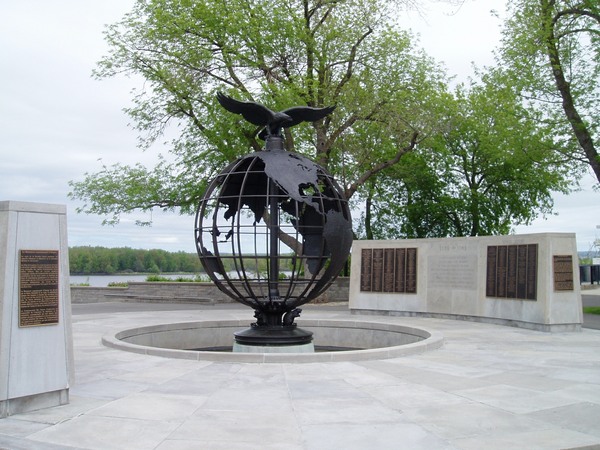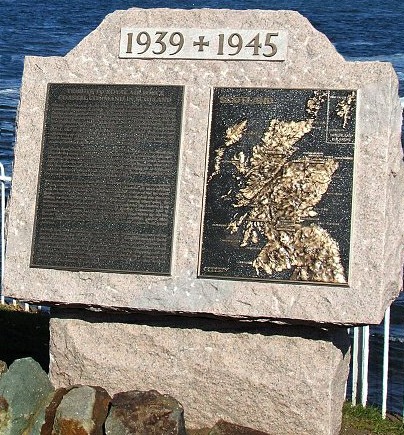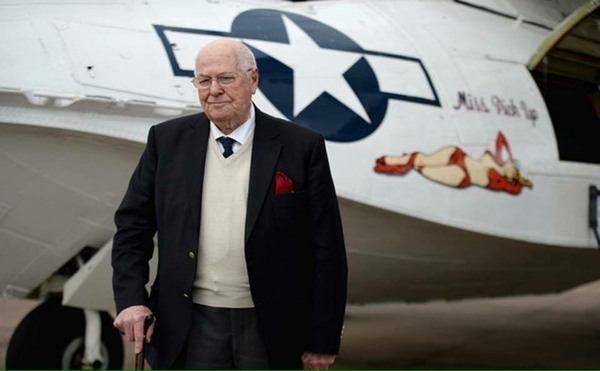Green Park Memorial, Ottawa
This memorial commemorates 820 RAF personnel who died serving in Ferry Command and also those who died whilst undergoing pilot training in Canada, USA and the Caribbean area.
Ferry Command was the brain-child of Lord Beaverbrook, Minister of Aircraft Production in Churchill’s War Cabinet in 1940. British factories could not produce sufficient bombers for the rapidly increasing Bomber Command but President Roosevelt was happy for American factories to produce the bombers needed for the RAF. The new bombers were initially sent by sea but Beaverbrook felt this was too slow and dangerous with the growing U Boat attacks in the Atlantic.
So in November 1940 the first experimental flight was authorised. Seven Hudson bombers under the command of Captain Donald Bennet took off from Gander, Newfoundland and arrived safely in England. Seven months later on 20 July 1941 Ferry Command was officially inaugurated at Gander under the command of Air Chief Marshall Sir Frederic,k Bowhill.
By the end of the war some 9442 aircraft out of 10,000 had been successfully flown across the Atlantic. In 1942 a southern route from the Caribbean to Brazil across the Atlantic to Freetown in West Africa and finally across the Sahara to Middle East Command in Egypt proved to be equally successful.
The impressive Green Park Memorial takes the form of a huge bronze globe surmounted by a flying eagle. Names of the missing men are inscribed on two walls alongside the memorial. It was unveiled by Queen Elizabeth II on 1 July 1959.
North Berwick Memorial, Scotland
This fine memorial stands in the Scottish Sea Bird Centre overlooking the sea at Berwick. It comprises of two large blocks of Scottish granite.
One depicts a map of Scotland marking all 27 Coastal Command bases in Scotland. The other has a text summarising the achievements of Coastal Command in World War II including the sinking of 189 German U Boats and 1,000,000 tons of shipping sunk or disabled. Reference is also made to the Meteorological Squadrons and the Air Sea Rescue launches. This memorial was unveiled by John Cruickshank VC on 4 May 2007 and his story deserves to be told.
On 17 July 1944 he was the pilot of a Catalina flying boat on his 25th mission. In civilian life he had been a bank clerk in Aberdeen. Based at Sullom Vue in the Shetlands he was ordered to patrol north to the Arctic waters off Norway. Suddenly the crew spotted a U Boat (U365) on the surface near the Lufuten Islands. Cruickshank immediately attacked but unfortunately his depth charge failed to release. Having to circle around for a second attack gave the Germans time to man their guns and on the second attack the Catalina was hit by a shell which caused much damage, killed the navigator and wounded most of the crew.
Cruickshank received 72 splinters in his chest, arms and legs. Despite almost fainting from loss of blood he determined to make a third attack. This was successful and the U Boat was destroyed. His inexperienced second pilot Flt-Sgt S Garret took over the controls for the long flight back to Sullom Vue. On arrival there Cruickshank insisted on making the final descent. He had lost so much blood that he had to be given a blood transfusion before he could be removed from the aircraft. Not surprisingly he was recommended for the Victoria Cross whilst Garret received the DFM (Distinguished Flying Medal). After a long spell in hospital he returned to duty but was not fit enough to fly again. More recently, in 2018, at the age of 98, he was Guest of Honour at the RAF Centenary Celebrations in Aberdeen.
A most remarkable man and the oldest living VC survivor of World War II
John Symonds







